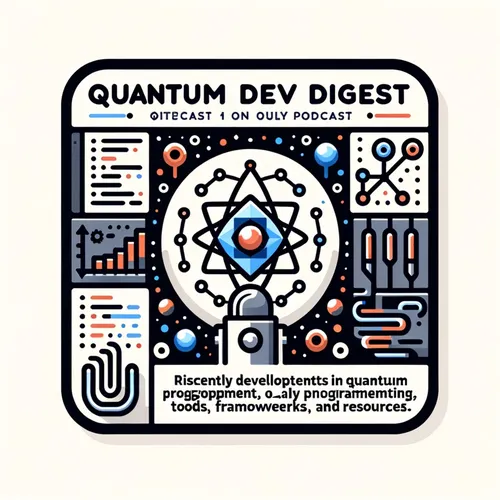Quantum Bubble Baths: Simulating Cosmic Decay with 5,564 Qubits
- Author
- Quiet. Please
- Published
- Mon 04 Aug 2025
- Episode Link
- https://www.spreaker.com/episode/quantum-bubble-baths-simulating-cosmic-decay-with-5-564-qubits--67246050
This is your Quantum Dev Digest podcast.
No time to waste on pleasantries—let’s leap straight into the quantum action. It’s August 4th, and if you thought last week felt turbulent, try keeping up with quantum computing’s pace. I’m Leo, your Learning Enhanced Operator, coming to you from a lab where error rates and entanglement are regular coffee-break topics.
This weekend, the quantum world unleashed a headline-grabber out of Jülich, Germany: physicists harnessed a 5,564-qubit D-Wave quantum annealer to model the decay of the universe’s false vacuum—a fundamental question at the crossroads of cosmology and quantum physics. The experiment simulated the fleeting quantum bubbles that could, in theory, usher in a new phase of the cosmos itself. But let’s make this less cosmic and more relatable: picture a bathtub filled with soapy water. Slowly, little bubbles—each a universe in miniature—pop up at random. Some expand, engulfing their smaller neighbors. This is basically what the team observed: a quantum dance where larger “vacuum bubbles” consumed the small, showing, for the first time at this scale, how quantum phase transitions would evolve in real time. Jean-Yves Desaules at ISTA likened it to a rollercoaster with several valleys, each representing a temporary, precarious state. When the universe finds just the right dip, quantum tunneling lets it skip to a new, more stable valley—a cataclysmic leap, but orchestrated by the randomness woven into reality itself.
Why does this matter? Well, until now, these mind-bending phenomena were mostly chalkboard scrawls and thought experiments. With over five thousand qubits collaborating in a tangle of interactions, researchers could actually witness—on a physical device—how such transitions ripple out, confirming predictions like the Kibble–Zurek mechanism. It’s one giant step for quantum experimenters, and a leap for any field—material science, AI, cryptography—that relies on mastering complex, unpredictable systems.
Let’s bring it down to Earth. Imagine you’re navigating a traffic jam. Classical computers plot routes one by one, like a commuter examining each possible escape street in order. Quantum computers, when tuned right, can sample all the traffic jams at once, pinpointing the hidden lane that gets you to the concert before the first chord strikes. Simulating cosmic bubble collisions may sound abstract, but these advances teach us how to manage tangled data, optimize logistics, and even protect data as quantum threats loom—a point that Taqbit Labs, and their new quantum-secured algorithms, stressed just last week.
In quantum, the bizarre isn’t just real, it’s practical. And every vacuum bubble we model brings us closer to a day when your phone’s security, your city’s traffic lights, or the cure for a rare disease could depend on quantum precision. So, what’s the quantum parallel lurking in your daily routine? Let me know.
Thanks for tuning in to Quantum Dev Digest. If you have questions or want a particular topic explained on air, just email me: [email protected]. Don’t forget to subscribe to Quantum Dev Digest. This has been a Quiet Please Production—find out more at quietplease.ai.
For more http://www.quietplease.ai
Get the best deals https://amzn.to/3ODvOta
